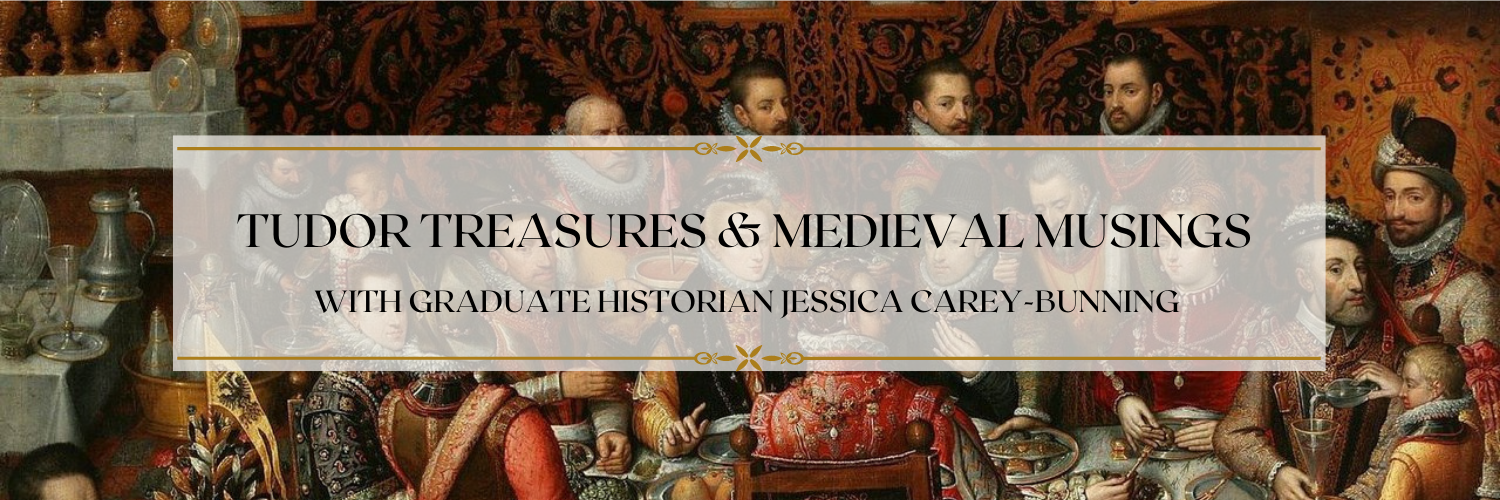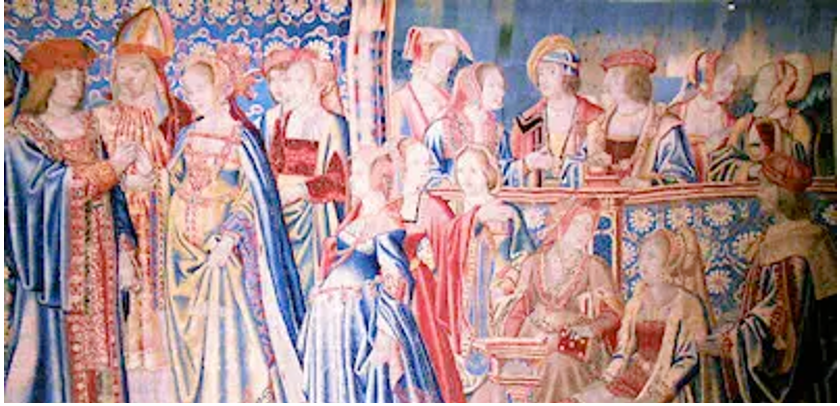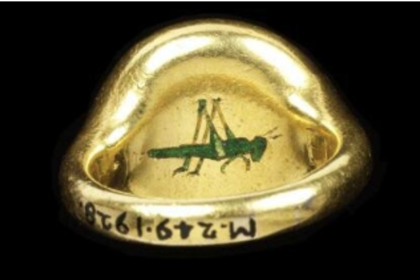In 1529, the Duke of Norfolk informed the Spanish ambassador, Eustace Chapuys, that the King was arranging for his daughter, Mary Howard, to wed the King’s illegitimate son, Henry Fitzroy, the Duke of Richmond. Two years later, the negotiations were finalised, with the wedding to take place in the second half of 1533, once the couple, who were the same age, had reached 14 years of age, the legal age for boys to marry (girls could be wed from 12).
At the same time this match was being planned, Henry VIII was embroiled in his own matrimonial quandary, as his attempts to have his first marriage to Katherine of Aragon declared null and void, to allow him to marry Anne Boleyn, were proving futile.
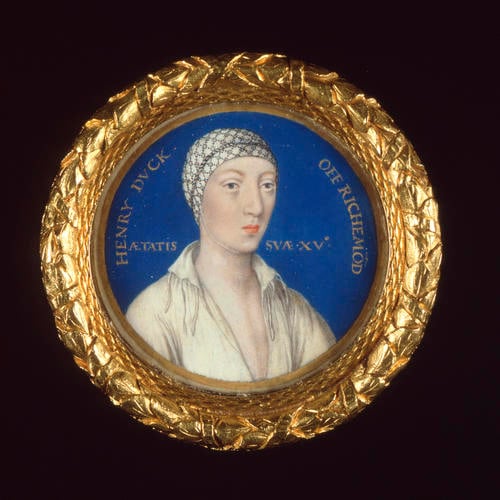
Although it seemed like the King was pushing the Fitzroy-Howard marriage, there is evidence that Anne was the driving force behind this match, with the bride’s mother, the Duchess of Norfolk writing ‘queen Anne got the marriage clear for my lord my husband.’ And indeed, Anne had far greater motivation for marrying the King’s only, albeit illegitimate, son off to her kinswoman. In the years prior to Anne’s ascendancy, Henry had been negotiating for his son’s marriage to a Portuguese princess; this was a threat to Anne, as it would place Fitzroy in a strong position as a rival claimant to the throne against any of her own children. The fact that there had been discussions around nominating Fitzroy as the King’s heir was alarming to a woman who knew she had many opponents who would prefer Fitzroy to any child of hers. Additionally, it also further solidified the idea that her family was worthy of being members of the royal family.
Fitzroy and Mary were technically too closely related to be allowed to marry, as they shared great-great grandparents in Richard and Jaquetta Woodville. For centuries, the Church had ruled that cousin marriages were illicit – originally it was within twelve degrees of consanguinity, which was eventually reduced to seven degrees and then four degrees. According to these ecclesiastical rules, Fitzroy and Mary were related within four degrees. This was not an impediment, however, as the Church frequently gave dispensations for consanguineous marriages all the time, even for first cousins.
If I may go off on a tangent for a second, this does lead to an interesting theological point. It may be questioned why Henry VIII was ok with such a thing – after all, his case for an annulment rested on the idea that the Pope could not issue dispensations against God’s law. Whilst this can very fairly be put down to Henry’s hypocrisy, there is another interesting aspect. Leviticus 18 deals with the rules around who one can marry. The section opens with the words: ‘No one is to approach any close relative to have sexual relations.’ The Catholic Church had long interpreted that to include cousins; however, the verse continues with a list of those whom one should not have relations with, and cousins are not mentioned anywhere, although ‘brother’s wife’ (which Katherine of Aragon was) is. Therefore, Henry VIII could make the case that whilst God’s express word could not be dispensed against, canon law and theological interpretation could be.
Returning to Fitzroy and Howard, it was known to all involved that in the lead up to their wedding, they would need to apply to the Pope for a dispensation, a mere formality that had virtually no risk of being denied, especially as Pope Clement VII was keen to do anything, outside of granting the annulment which risked angering his ally-cum-captor, Charles V, to placate the English king.
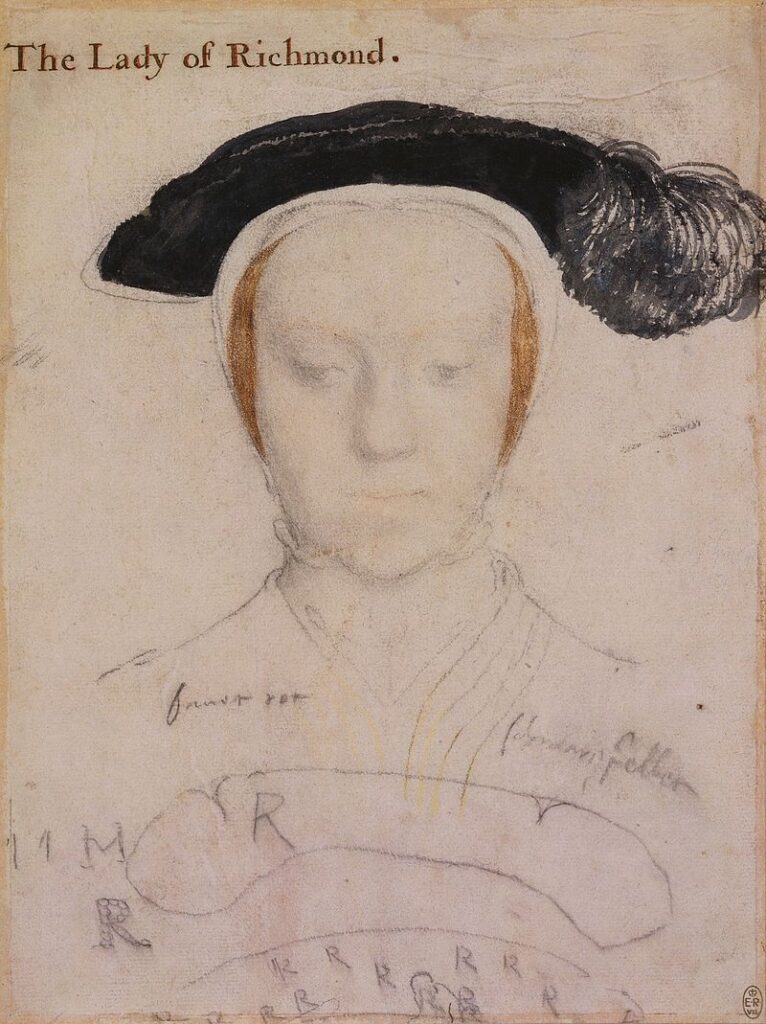
The process for applying for a dispensation was simple. Essentially, send a missive to the Pope and the apostolic penitentiary, setting out what dispensation is required and why it should be granted – along with the standard fees, and perhaps a nice little bribe to sweeten the deal. Generally, a dispensation in the form of a letter or charter would be sent back, with little fuss. In fact, within England, appeals did not even need to go that far. There were several papal agents in England who were empowered to grant a limited range of dispensations, including for marriages within the 4th degree. The greatest of these agents was Cardinal Wolsey, however he had been stripped of his titles and was dead by the end of 1530. There were a number of other papal agents, however, including amongst the King’s chaplains. However, there were some questions as to the legitimacy of these dispensations, so for marriages of great importance, such as those involving royalty and the nobility, direct papal approval was usually applied for.
But of course, before a dispensation could be sought, Henry broke away from Rome and the Church of England was formed. One of the most significant pieces of legislation related to this schism was the Ecclesiastical Appeals Act, passed in April, 1533, which made it illegal to seek or follow papal rulings, including dispensations.
This presented a problem for the Fitzroy-Howard alliance. For although the Ecclesiastical Appeals Act had made the King of England the head of the Church in England by default, it did not set out any provisions for how such things as dispensation would be granted. It wasn’t until early 1534 that the Ecclesiastical Licences Act would give the Archbishop of Canterbury the authority to issue dispensations.
So what to do in the meantime for the young Henry Fitzroy and Mary Howard? With the birth of a daughter, whose claims to the throne could be challenged by her older and well-known siblings, Anne would have been keen to have Fitzroy nullified as a risk through this marriage to her kinswoman, so a delay was undesirable.
But who could grant their dispensation? Even reading the text of the dispensation is unclear on this point:
“Sed quia quarto Consanguinitatis gradu invicem conjuncti estis, vestrum in hac parte desiderium non potestis adimplere, Canonica dispensatione desuper non obtenta. — Henricus Dux Richmondiae et Somerset Com. de Nottingham, Magnus Admirallus Ang. et praeclara Femina Maria Howard Praepotentis Viri. Tho. Ducis de Norfolcia Filia. — Richard Gwent. Deputatus pro Pet. de Vannes, 26°Novr. 1533. 11° Pontif. Clem. VII”
The final line of the dispensation informs us that the dispensation was issued by Richard Gwent, who was acting as deputy for Peter Vannes, a papal agent in England as well as a secretary to Henry VIII and prebendary of Salisbury Cathedral. As a papal agent, he was empowered to grant dispensations, and the National Archives holds at least three such documents dating from 1530-1533. However, he was also a loyal servant to Henry VIII, acting as one of the King’s agents in the divorce negotiations, and he was a supporter and cleric of the English Reformation. The question is, in which role was he issuing the dispensation?

The fact that it is dated according to papacy of Clement VII rather than the regnal years of Henry VIII adds to the ambiguity; why is Clement’s authority cited when he had not had authority over the Church in England since April? The document is dated to the 26th November, the day the marriage took place, so it was clearly not a case of a document issued in the months before the break with Rome.
My assessment of this situation is that Peter Vannes (through his deputy, Richard Gwent, as Vannes was on a diplomatic mission in Europe at the time) was specifically chosen because of this very ambiguity. The liminality of this period meant that all bases had to be covered. The document was issued by a man who had the authority to do so bestowed upon him by both the Pope and the King, satisfying all parties and meaning that no-one could point to the marriage, and more importantly, any children of the union, and dispute its validity.
Henry Fitzroy and Mary Howard were married on the 26th November, 1533, in a quiet ceremony at Hampton Court Palace. Sadly, Henry Fitzroy died less than three years later, on the 23rd July, 1536, at only 17 years of age. His marriage to Mary was never consummated, a fact that the King seized upon to try and avoid paying her jointure, although three years later this issue seems to have been resolved in Mary’s favour. Despite a proposal from Thomas Seymour, brother of Jane Seymour and eventually Catherine Parr’s final husband, Mary never remarried.
